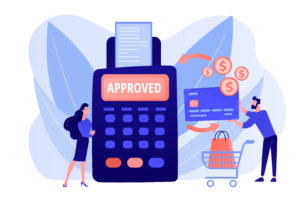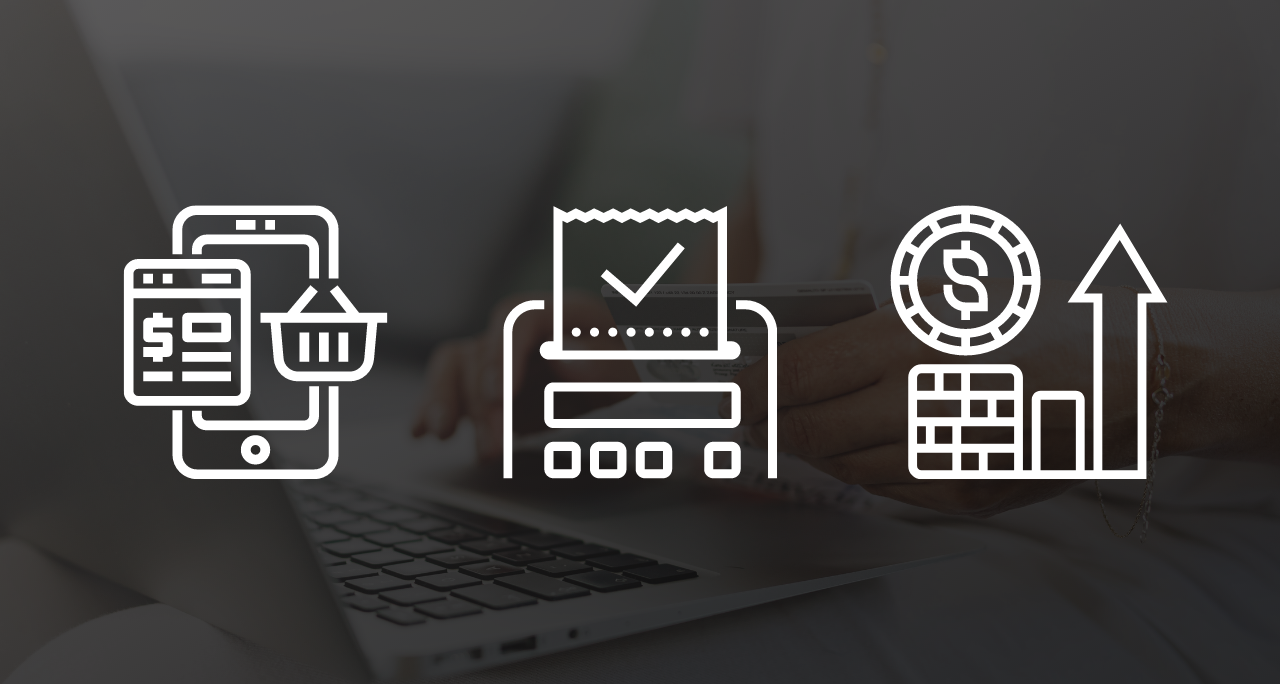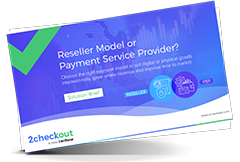2022 is shaping up to be the year businesses excel with digital platforms. If they fail to adapt to the digital model, they risk missing out on the plentiful profits available. In fact, one survey reported that businesses that have embraced digital methods saw a 24% increase in revenue and profits.
In particular, customers are seeking digital payment options. These speed up the transaction process, can be contactless, and allow online purchases. Additionally, they help businesses expand into new markets and refine the experience for current patrons. However, the only way merchants will come to a favorable outcome is to reach and maintain a high authorization rate.
What are authorization rates, and why are they important?
There are now several ways to pay online, from digital wallets to cryptocurrency; nevertheless, cards remain at the top. When payments are made via cards, the amount is temporarily put on hold until the card holder’s institution releases or rejects the transaction.
An authorization rate, also referred to as auth rate, is the percentage of merchant’s transactions that get approved during this authorization process.
As a business, you’ll want a high authorization rate, or the total number of successful transactions, because it means more revenue coming into your company. Even small authorization rate boosts can lead to considerable revenue growth. For a yearly company revenue of $100 million, for example, each 1% extra boost in auth rates can get said company $1million extra in yearly revenue.
In addition, managing clients’ expectations is another reason why you should proactively monitor your authorization rates. When a transaction is not approved by the banks, consumers may not know or understand why their card is declined, which can cause frustration and lead them to other businesses where they do not experience the same issue.

Reasons Your Authorization Rates Might Be Low
Safeguards are in place to protect consumers and businesses, and as a result, failed transactions are a normal part of any system. Low authorization rates are a sign of a problem (or problems) disrupting the system. The following are some of the main issues to look out for.
1. Network Declines
Network declines come from banks as they can halt and deny consumer payments. This allows financial institutions to protect their clients from fraud and other unauthorized transactions.
Some banks automatically prevent purchases outside a user’s typical network, so it is important to remind patrons of this security feature. Plus, PSD2 allows banks to deny disbursement of funds from unauthenticated purchases, so it is paramount for businesses to remain in compliance.
2. Cross-border Payments
You may have difficulties with transactions made outside of the cardholder’s country. One issue comes from variance in currencies. Those with high rates of fluctuation are more likely to fail. You will have the most success if the transaction occurs with the same currency and within the same region as the card issuer because they are less likely to be marked as scams.
Another great way to increase authorization rates is to process the transaction as closely as possible to the issuer, and the right payment provider will support you with this. 2Checkout can enable intelligent payment routing to process these transactions, starting with local processing, regional continental, or global processing.
3. Data Laws (PSD2)
Within the past few years, new legislation sprouted in Europe. Specifically, the Payment Services Directive 2 (PSD2), which aims to enhance eCommerce security by requiring multi-factor authentication. Authentication requires two of the following:
- something the cardholder has (like a phone)
- something the cardholder knows (like a password)
- something unique to the cardholder (like a fingerprint)
Consumers will have to adjust to the updated rhythm of the check-out process, and rates may decline because they are unfamiliar with the process.
4. Inferior Fraud Screening & Prevention
When potential fraud is detected, a card will be declined to protect the client and their funds. If your business has a turbulent history with fraudulent chargebacks, is in a high-risk industry, or both, then your transactions are more likely to fail. Using up-to-date risk screening tools is essential to protect your business, have high authorization rates by lowering declines and to ensure a low chargeback rate after authorization.
5. State of Technology
Consumers, merchants, card issuers, and banks are all bound by the technology they use. Unfortunately, some are still using outdated technology, which lacks many of the benefits of new and emerging technology. Security tends to be less robust, which means higher fraud rates, and there are fewer features supporting authorization (i.e., automated retries).
6. Network Availability
The volume of online shoppers has dramatically increased over the past two years, and your network must be able to support the increase in numbers. Network downtime, especially during high traffic times, means more incomplete transactions.

Best Practices for Improving Your Card Authorization Rates
Now that you know some of the common issues that reduce authorization rates, it is time to increase those rates and implement new strategies to boost incoming revenue.
Optimize Payment Flows
The payment process is the climax of the shopper’s journey, and it is a critical point to increase sales. Whether transactions occur in person or digitally, they should be quick, concise, and seamless.
First, you’ll want to simplify payment pages. Clutter will slow down and confuse the customer, so only relevant information should be on the page. This includes payment details, prices, and quick sale items related to their purchase. In addition, pages should be responsive on the device the consumer uses.
Next, you should consider one-click payment options. Since this only requires one step, transactions are rapid, and users won’t have to worry about inputting the wrong information or accidentally skipping a step.
Lastly, errors are bound to occur, so it is paramount to help consumers resolve their problems. For example, you can implement a system that picks up and highlights missing or incorrect information before a customer attempts to finalize the transaction. You should also add troubleshooting tips and provide a chat service or telephone number, which can be automated and linked to a customer service representative.
Manage Fraud Rates
Fraud comes in several forms, but there are ways to reduce the number of successful attempts. 2Checkout recommends a combination of prevention measures, including validation keys, flagging negative patrons, and device tracking. In addition, you and your team will need education and training to spot and prevent phishing attacks.
These preventative measures will support authentications rates as you’ll be more likely to pinpoint legitimate fraud instead of declining genuine customers.
Improved Authentication Mechanisms
Rising cybercrime rates have made consumers cautious, but authentication can help protect your customers and improve payment success. Some options include:
- Tokenization – sensitive data is turned into a random string of characters called a token sent instead of the client’s details.
- Multi-factor authentication – the user verifies their identity in multiple ways. Usually, a password and a push notification.
- Comparisons – compares consumer information to their bank’s information of the consumer.
- Validation keys – phone calls, texts, or emails provide the patron with a code that must be presented to confirm their identity.

Frictionless Flows
Using frictionless flows in the scenario of data laws is a great way to improve the shopping experience for the shopper and also to reduce 3DS authentication errors. Whenever possible, take advantage of all PSD2 exemptions on out of scope transactions such as Low Value, Low Risk or Recurring transactions but also of Merchant Initiated transactions as a follow-up to already authentication Customer Initiated Transactions.
Collect Billing Information
As mentioned above, customer information can be compared to their bank’s data to authenticate a purchase. Typically, this is billing information, and if there are discrepancies, the bank will reject the transaction.
Guest patrons will have to enter this information every time they make a purchase, but those with accounts or one-click pay can bypass this step. Unfortunately, their records can become outdated, so it is important to have users routinely confirm their information. Additionally, it can help protect against fraud by alerting users to suspicious changes within their accounts.
Use Revenue Recovery Tools
These tools are a great resource to use to gain revenue from details that may get overlooked:
- Account Updater scans credit card information and searches for expired cards. When an expired card is found, it will update it to the new expiration date.
- Intelligent Routing directs payments through the best routes for authorization.
- Automatic Retry automatically retries failed transactions.
Bonus: Want to maximize recurring revenues? Take a look at 2Checkout’s industry-leading authorization and retention tools.
Accept Different Payment Methods
Alternative payment methods like digital wallets are another great way to boost revenue and grow your authorization rate. Digital wallets are less likely to have transaction failure because there are no lost, stolen or expired cards to manage. Also, they tend to have stronger authentication, which means they are less likely to be marked as fraudulent purchases.
Local popular payment methods – like SEPA, Sofort, Bancontact or iDEAL – are also a must-have for merchants looking to boost their authorization rates. About 80% of iDEAL payments, for example, are authorized by the customer in their mobile banking app, which results in a frictionless shopping flow. This in turn generates higher conversion rates, around 90% for iDEAL payments via mobile banking apps, thus driving real revenue growth for merchants who accept this local payment method.
Other alternative payment methods, such as cryptocurrency or ‘Buy Now, Pay Later’ (BNPL) are also options to consider in some niches.
Use a Reseller Model
A less known aspect about auth rates is that they are greatly dependent on the type of processors you use for your business. In general, merchants working with Payment Service Providers (PSPs) have their transactions processed based on the merchant’s location. This means that working with a PSP when selling cross border could in fact be negatively impacting your authorization rate, as the seller has to take action themselves in order to process transactions locally in different geographies.
By comparison, online sellers working in a reseller/Merchant of Record model with their eCommerce and payments provider have better odds to see their auth rates go up. This is because an MoR works with local acquirers and processors, giving you a higher chance that the payment goes through and is approved, thus boosting your authorization rate.

Conclusion
Ecommerce is on the rise and will continue to expand, but merchants need to be proactive to ensure their users’ payments are approved and the business’ authorization rate stays high.
Working with 2Checkout gives you full transparency into your auth rate, which merchants can check in the Authorization dashboard in our control panel. Add this to the full suite of tools we employ to guarantee revenue collection for our partners, like automatic retries, account updater, intelligent routing, and the ability to manage multiple currencies, and you have a comprehensive setup to collect all due revenue.
Sign up for free today and discover the benefits of selling through an all-in-one monetization platform.
Looking to expand your eCommerce business across borders? Check out our solution brief to discover the two main payment processing setups available through 2Checkout − Reseller (Merchant of Record) and Payment Service Provider (PSP) − and how each can help you sell products or services online.






